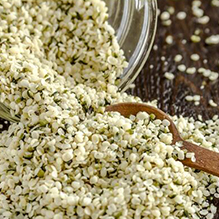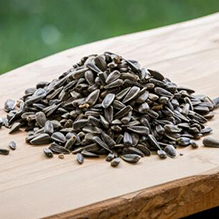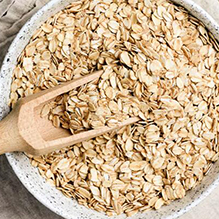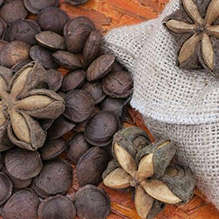Buckwheat Seed Hulling Machine

Buckwheat Seed Dehulling Machine
Our Buckwheat Seed Dehulling Machine is a highly efficient and durable solution for dehulling buckwheat.
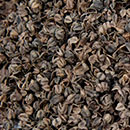

Models For Sale: TFQM400
With precise dehulling capability and user-friendly operation, it consistently delivers high-quality dehulled buckwheat while minimizing kernel damage. It’s the ideal choice for reliable and cost-effective buckwheat dehulling processes.
Other Applications For Your Needs
Poly as a leading manufacturer of hulling and shelling machine, we produces all kinds to meet your various raw materials. Here are the raw materials we can deal, click to get the ideal machinery based on your needs.
Buckwheat Seed Hulling Machine For Sale
The TFQM400 buckwheat hulling and separating machine is known as one of the most effective buckwheat hullers worldwide. It efficiently hulls buckwheat while automatically separating the kernels from the husks and removing impurities.
Operating with a dry method, it eliminates the need for pre-treating the buckwheat with water or heat. Its user-friendly operation, high dehulling and whole kernel recovery rates, as well as clean separation of husks from the kernels, make it an exceptional choice for buckwheat processing operations.
If you’re seeking a reliable and efficient solution for buckwheat hulling, the TFQM400 is an excellent option.
TFQM400 Buckwheat Seed Hulling Machine
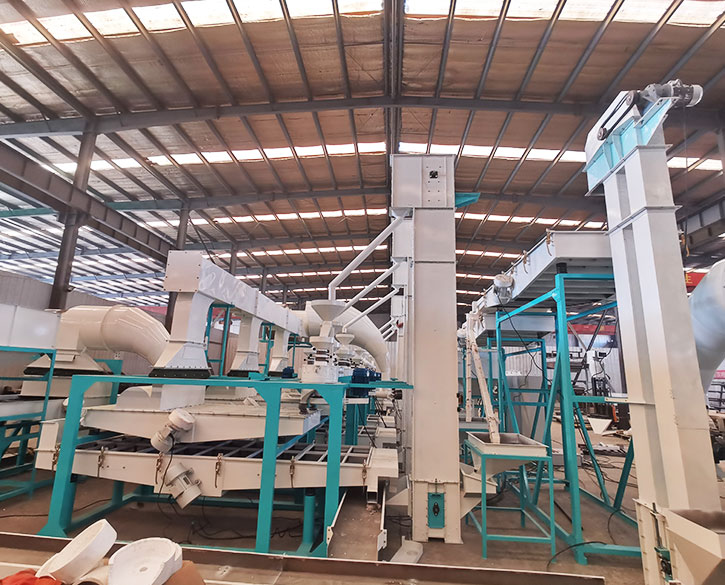
| Power | 6.44kW |
| Output | 300kg/h |
| Whole Kernel | 98% Min. |
| % of Seeds in the Kernels | 0.5% Max. |
| % of Kernels in the Shells | 0.5% Max. |
Applications of Buckwheat Seed Shelling Machine
The Buckwheat Seed Shelling Machine presents versatile applications across various industries. In the food sector, it plays a pivotal role in processing buckwheat to create a range of products. By removing the outer shells, the machine prepares buckwheat for numerous food applications, such as producing buckwheat flour, breakfast cereals, and gluten-free noodle products. Its efficient hulling process ensures high-quality kernels, meeting the demands for clean and nutritious food products.
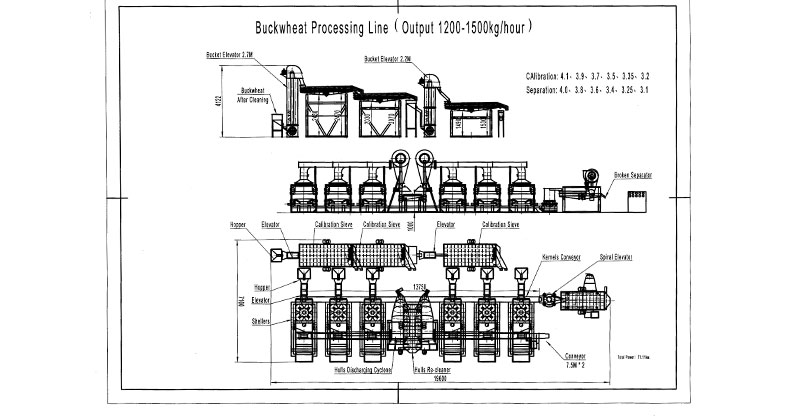
Furthermore, the machine contributes to the production of buckwheat oil. By effectively dehulling the seeds, it prepares them for the extraction of high-quality oil used in cooking and food processing. The machine’s ability to streamline the dehulling process results in improved oil extraction efficiency and yields, enhancing the overall oil production process.
In addition to its food-related applications, the Buckwheat Seed Shelling Machine is also used in agricultural operations. It enables the preparation of high-quality buckwheat seeds for sowing, contributing to improved crop yield and seed quality. By efficiently removing the husks, the machine ensures that the seeds are viable and capable of producing healthy crops, benefiting agricultural productivity.
Overall, the Buckwheat Seed Shelling Machine’s diversified applications demonstrate its significance across the food and agricultural sectors, enhancing food production, oil extraction, and agriculture while contributing to the creation of high-quality, healthy products. Its versatile use, efficient operation, and impact on different industries position it as a valuable asset for processing buckwheat.
Key Components of Buckwheat Seed Hulling Machine
The Buckwheat Seed Hulling Machine comprises several key components crucial to its efficient operation in the buckwheat processing industry. One essential component is the hulling chamber, where the actual dehulling process occurs. This chamber houses specially designed rollers or blades that effectively remove the outer husks or hulls from the buckwheat seeds while preserving the edible kernels within. The design and robustness of the hulling chamber are critical factors in determining the machine’s overall dehulling efficiency and the quality of the end product.

Another vital component is the screening system, which separates the dehulled buckwheat kernels from the removed hulls and impurities. This component ensures that the final product is clean, free of contaminants, and consists solely of high-quality kernels, ready for further processing or consumption.
In addition, the feeding mechanism is integral to the machine, ensuring a continuous and uniform supply of buckwheat seeds into the hulling chamber. This component plays a pivotal role in maintaining a consistent dehulling process and optimizing the machine’s overall performance.
The machine’s control and monitoring system, including sensors, controllers, and a user interface, form another essential component. This system enables operators to oversee and regulate various aspects of the hulling process, such as speed, feed rate, and hulling pressure, ensuring optimal efficiency and quality of the dehulled buckwheat seeds.
Furthermore, the machine may incorporate a dust collection and removal system to maintain cleanliness and hygiene during operation. This component helps minimize dust accumulation, ensuring a cleaner working environment and preventing contamination of the processed buckwheat.
Overall, the synergy of these key components in the Buckwheat Seed Hulling Machine ensures its ability to efficiently dehull buckwheat, delivering high-quality kernels and minimizing waste in the processing operation.
Working Principle of Buckwheat Seed Shelling Machine
The working principle of a Buckwheat Seed Shelling Machine entails a comprehensive process designed to efficiently and precisely dehull buckwheat seeds, resulting in high-quality kernels. The machine’s operation begins with the feeding hopper, which facilitates the uniform and continuous supply of raw buckwheat seeds into the system. From there, the seeds are elevated through a bucket elevator to the huller, which constitutes the primary dehulling unit.
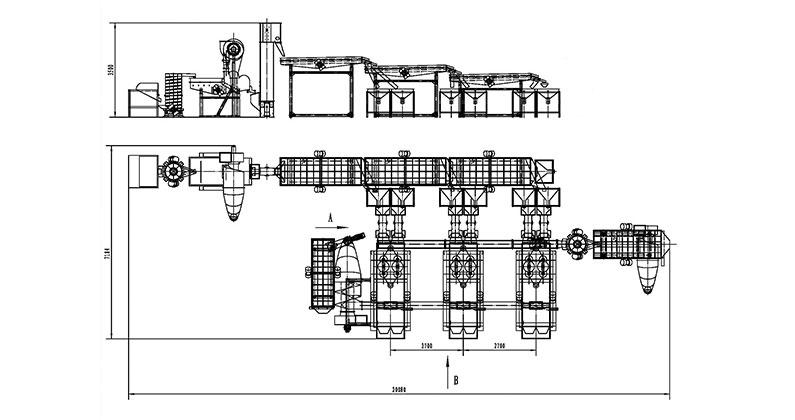
As the seeds enter the huller, they pass through a compartment where specialized mechanisms, such as rollers, blades, or impact elements, apply force to dislodge the outer husks or hulls while minimizing damage to the kernels. This step is essential for achieving a high dehulling efficiency and maintaining the integrity of the buckwheat kernels.
Following the dehulling process, the machine incorporates a screening and separating mechanism for segregating the dehulled buckwheat kernels from the removed hulls and any remaining impurities. This stage ensures that the final output consists of clean, high-quality kernels ready for subsequent processing or packaging.
Moreover, the machine’s electric control cabinet serves as a core component, regulating and overseeing the entire dehulling process. Through this control system, operators can manage various parameters, such as the speed, feed rate, and screening efficiency, ensuring an optimal and meticulously controlled dehulling process.
The primary goal of the working principle of the Buckwheat Seed Shelling Machine is to deliver efficient dehulling while maintaining high kernel quality and minimizing waste and damage during the processing operation. By adhering to this principle, the machine consistently facilitates the production of high-quality dehulled buckwheat, meeting the demands for clean and nutritious kernels in the food and agricultural sectors.
Features of Our Machine
Precision Control System
Our hulling machine features a state-of-the-art precision control system that allows for fine-tuning of hulling intensity, accommodating different seed sizes and conditions with ease.
Energy-Efficient Design
Engineered for sustainability, our machine boasts an energy-efficient design that reduces electricity consumption, lowering operational costs while maintaining high productivity.
Durable Construction
With high-grade stainless steel, our hulling machine withstands the rigors of continuous operation, ensuring longevity and reliability in high-volume processing environments.
Advanced Aspiration System
The machine includes an advanced aspiration system that effectively separates hulls from seeds, enhancing product purity while minimizing waste & creating a cleaner workspace.
The Total Cost of Ownership of Buckwheat Seed Hulling Equipment
When assessing the Total Cost of Ownership (TCO) of Buckwheat Seed Hulling Equipment, it’s essential to consider various factors beyond the initial purchase cost. The TCO encompasses all direct and indirect costs associated with owning, operating, and maintaining the equipment, providing a comprehensive view of the financial impact over its entire lifecycle.
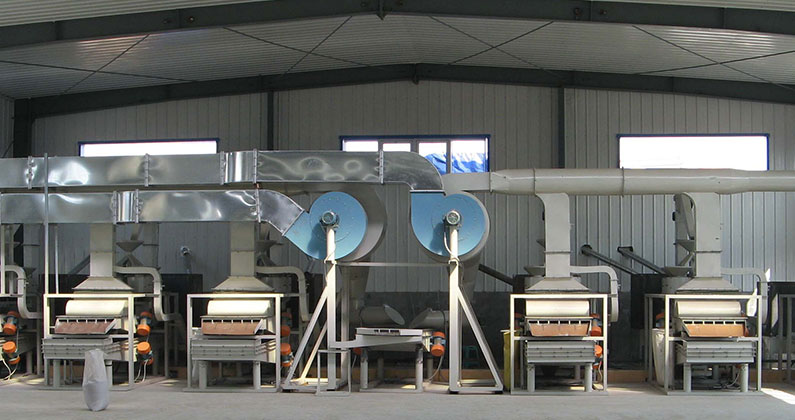
Direct costs include the initial purchase price, installation, and commissioning expenses, as well as ongoing operational costs such as energy consumption, maintenance, and repair. It’s important to evaluate the machinery’s energy efficiency, maintenance requirements, and the availability of spare parts to anticipate and manage these direct costs effectively.
Indirect costs encompass a wide range of elements, including labor, operator training, and potential downtime due to maintenance or repairs. Training operators to use the equipment optimally and ensuring access to skilled maintenance personnel contribute to the long-term operational efficiency of the hulling equipment.
Additionally, the residual value of the equipment at the end of its service life is a significant factor. Evaluating its potential resale value or repurposing for alternative applications contributes to a more accurate assessment of the TCO. Moreover, regulatory compliance and environmental considerations, such as dust removal, waste management, and adherence to safety standards, can impact the overall cost of ownership.
By analyzing the TCO of Buckwheat Seed Hulling Equipment, businesses can make informed decisions that go beyond the upfront cost. Understanding the comprehensive financial impact enables companies to strategize for long-term maintenance, budgeting, and resource allocation effectively. This equips businesses with the knowledge necessary to make informed investments, optimize operational efficiency, and achieve long-term financial sustainability.
In summary, a thorough TCO evaluation of Buckwheat Seed Hulling Equipment is vital for strategic financial planning, providing a complete understanding of the total impact of owning and utilizing the machinery throughout its lifecycle. This assessment facilitates well-informed financial decisions, ultimately leading to operational efficiency and long-term cost-effectiveness.
How Efficient Hulling Can Minimize Product Loss
Efficient hulling is paramount in minimizing product loss in the processing of seeds, including hemp. Advanced hulling machinery is engineered to maximize the yield of intact seeds while reducing waste.
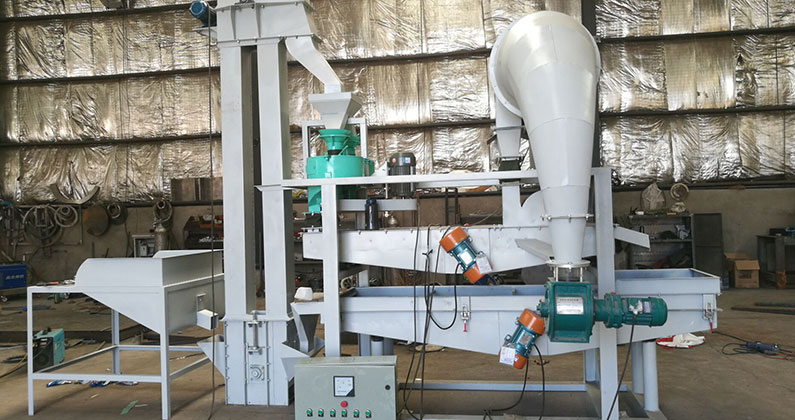
One key aspect of efficient hulling is the precision adjustment of machinery to accommodate different seed sizes and conditions. This adaptability ensures that the hulling process is gentle enough to prevent seed damage but forceful enough to remove the hulls effectively. By optimizing the hulling pressure, the incidence of cracked or crushed seeds is significantly reduced, preserving the quality and quantity of the final product.
The incorporation of real-time monitoring systems in hulling equipment is another innovation that contributes to efficiency. These systems can detect and adjust to variations in seed quality or moisture content, ensuring consistent processing and reducing the risk of over-hulling, which can lead to product loss.
Moreover, efficient hulling machinery often includes features such as recirculation systems that reintroduce unprocessed or partially processed seeds back into the hulling cycle. This feature ensures that every seed has the maximum chance of being hulled correctly, further reducing waste.
By leveraging these technological advancements, producers can achieve a higher rate of seed recovery, ensuring that as much product as possible is retained for sale or further processing, thus enhancing profitability and sustainability.
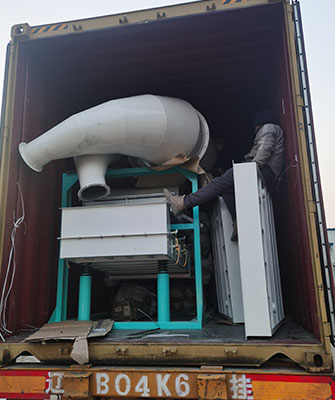
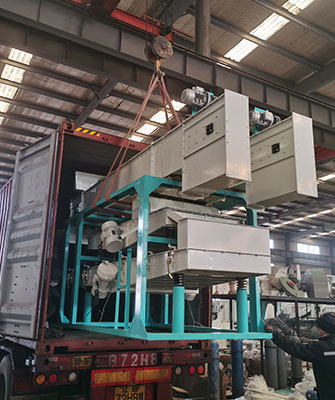
Customer’s Feedback
Your buckwheat hulling machine has revolutionized our processing operations! It efficiently dehulls oats, boasts minimal maintenance, and consistently produces top-grade results.
Bahamas / James Davis
About Poly Hulling Machine
Poly Hulling Machine stands as a premier provider of seed processing equipment, boasting over 25 years of industry expertise.
Our catalog features a diverse array of machinery, including hemp seed hulling lines, grain dehulling systems, seed cleaning machines, automated sorting units, advanced drying technology, and precision sifting equipment.
Poly Hulling Machine is dedicated to delivering pioneering solutions tailored to the unique requirements of our global clientele.
25+
Years Served
100+
Countries Exported
80+
Finished Projects
40+
Types of Machines
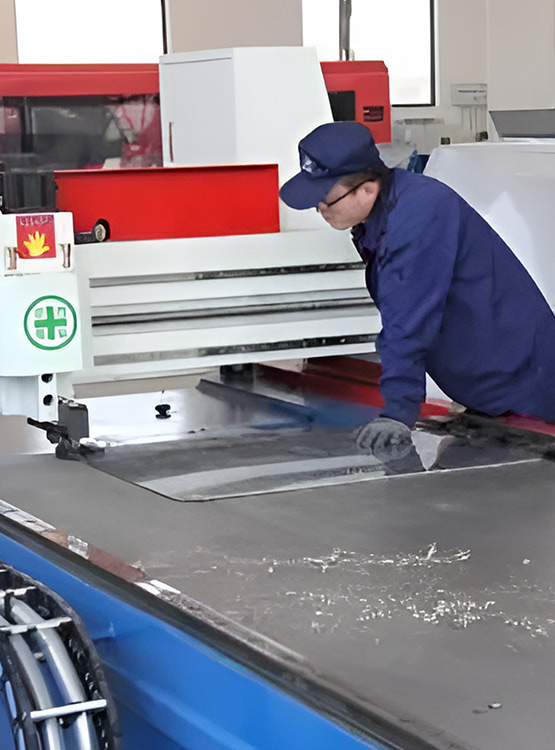
Talk to Our Expert For More About Poly Hulling Machinery Details.

